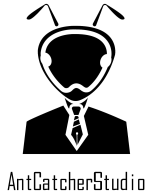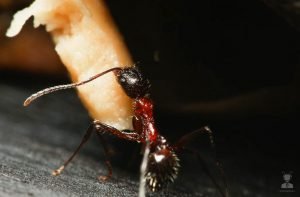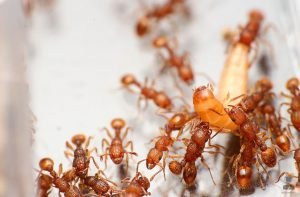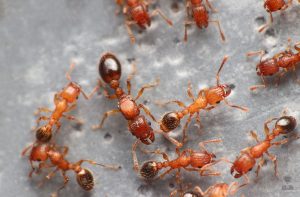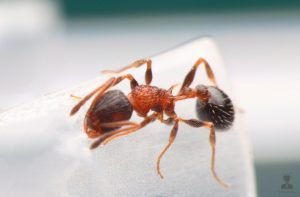
文章目錄
簡介
厚背刺家蟻是一種極其稀有的螞蟻,是台灣產螞蟻中唯一一種種籽食性的螞蟻;台灣特有種,在野外以無花果種籽為主食,並有蒐集種籽存放至巢穴作為糧食儲備的習性,兵蟻頭部發育特化,用以加工種籽,體型小、族群規模小,飼養難度易~中等。
蟻種資訊
| 厚背刺家蟻 學名:Acanthomyrmex crassispinus |
|||
|---|---|---|---|
|
體色深棕色,體表光滑、具點狀刻紋,兵蟻頭部發育特化,工蟻背部具2對明顯棘刺。 厚背刺家蟻為單蟻后型的螞蟻,成熟蟻巢由1隻蟻后及約50隻的職蟻組成。厚背刺家蟻屬種籽食性的螞蟻,在野外以無花果種籽為食,在台灣僅分布在南部地區,築巢於倒木、腐木中,數量分布非常稀少,較難在野外發現其蹤跡。 |
|||
| 飼養資訊 | |||
| 飼養容易度 | 容易~中等 | ||
| 溫濕度控制 | 不超過32度;提供較高濕度 | ||
| 生產速度 | 慢 | 個性 | 極度溫順 |
| 生物學資訊 | |||
| 制度 | 單后制* | 食性 | 種籽食性 |
| 巢型 | 倒木、腐木 | 特有種 | Taiwan Endemic Species |
| 體長 | 蟻后 | 約4~5mm | |
| 大型工蟻 | 約4~5mm | ||
| 工蟻 | 約2~3mm | ||
※ 目前尚不確定厚背刺家蟻是否具有倭后
清晰照片
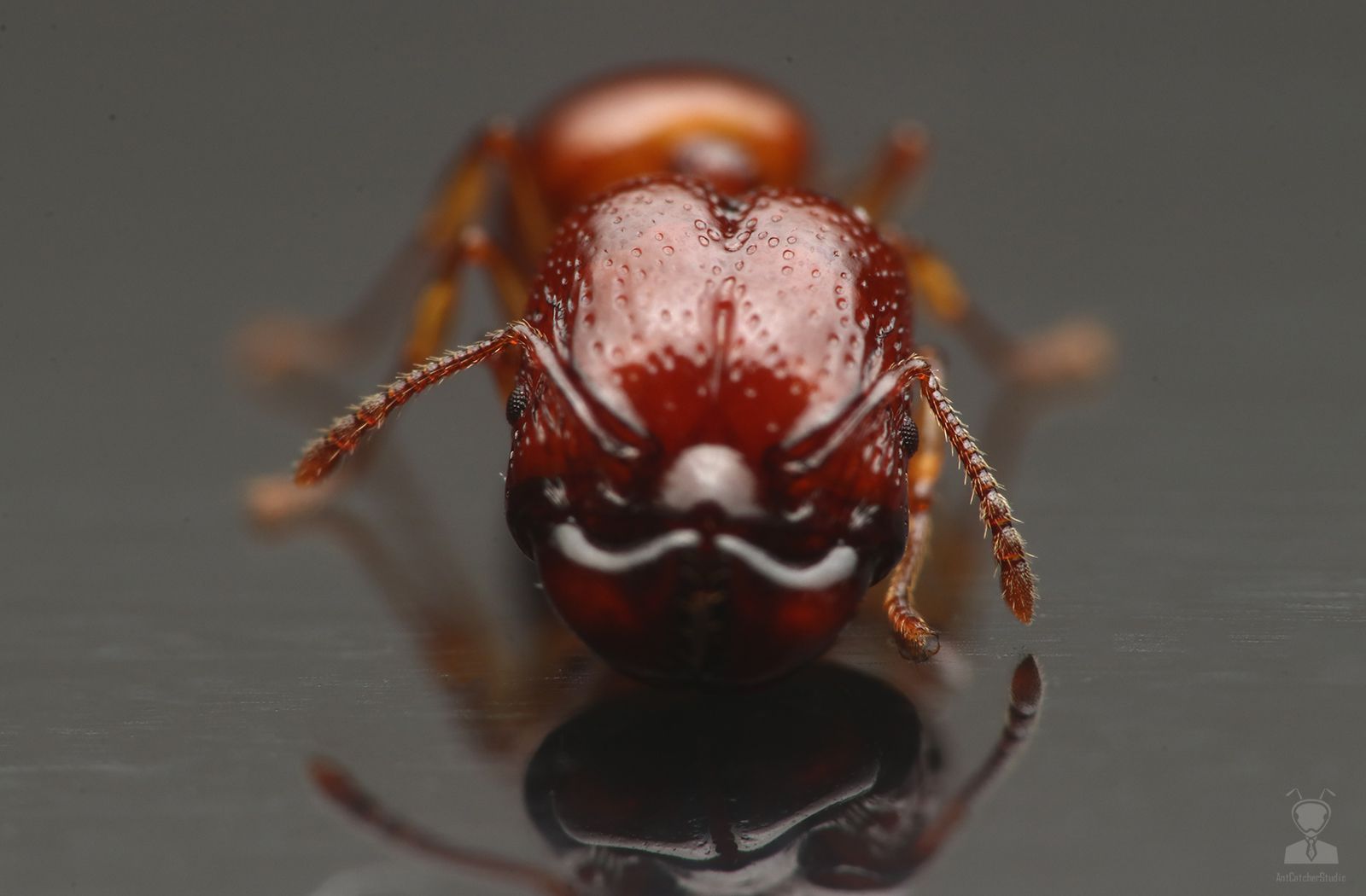



詳細飼養方式

如何飼養厚背刺家蟻?
花費時間 至少: 420 days
小群落1~20工
使用堵水試管或小型石膏蟻巢培養,溫度維持25~30度、提供較高蟻巢濕度,放置黑暗環境,靜待蟻后產卵。期間維持每週餵一次的頻率,可使用偏素食螞蟻飼料、迷你麵包蟲、無花果種籽餵食。此階段數量增長緩慢。
中群落20~40工
使用小型石膏蟻巢培養,溫度維持25~30度、提供較高蟻巢濕度,避免打擾。期間維持每週餵1~2次的頻率,可使用偏素食螞蟻飼料、SS號紅蟑、迷你麵包蟲、無花果種籽餵食。此階段數量增長較快。
成熟群落40~100工
使用小型石膏蟻巢培養,溫度維持25~30度、提供較高蟻巢濕度。期間維持每週餵1~3次的頻率,可使用偏素食螞蟻飼料、S號紅蟑、迷你麵包蟲、無花果種籽餵食。此階段數量增長速度趨緩,開始出現繁殖蟻。
常見疑問
厚背刺家蟻婚飛時間?
厚背刺家蟻尚未被觀察到具婚飛行為,普遍為成熟群落之新生蟻后在交配後,帶著同巢的少量工蟻離開原巢,發展新群落。
厚背刺家蟻哪裡抓?
厚背刺家蟻僅分布於南部及部分離島,無法透過婚飛進行採集,因此數量極其稀少。
厚背刺家蟻好養嗎?
只須確保濕度足夠、食物充足、蟻巢不過大,即可容易飼養。※使用土壤或石膏飼養效果最佳,不建議使用加氣磚蟻巢
厚背刺家蟻要溫控嗎?
溫控24~26度可良好飼養;不溫控,未超過32度,保持飼養環境通風亦可穩定飼養。( 厚背刺家蟻僅分布於溫度較高的南部)
其他家蟻亞科蟻種
長腳家蟻 Aphaenogaster sp.1
你覺得這篇文章如何? 點擊評分...閱讀更多
日本皺家蟻 Tetramorium nipponense
日本皺家蟻學名:Tetramo...閱讀更多
雙脊皺家蟻 Tetramorium bicarinatum
文章目錄1 簡介2 ...閱讀更多
天蓬痕胸家蟻 Temnothorax tianpeng
天蓬痕胸家蟻是一種少見的螞蟻,...閱讀更多
本站竭盡所能檢驗資料正確性,但仍可能有部分內容錯誤或未及時更新,還請您海涵,也歡迎來信指正錯誤之處。
本公司具有本站所有原創文字、原創圖片之完全版權及著作權,本站原創內容採 CC BY-NC-ND 3.0 ( 姓名標示 – 非商業性 – 禁止改作 )方式授權您使用,但尤其嚴禁轉載、編輯至百科類網站 (包括但不限於維基百科 ) 。
針對侵權行為本公司將直接對行為人要求索賠。第三方單獨授權本站使用之文字、圖片,本公司亦有維護原作者權益的責任。
本站除原創內容外還有部分內容來自開放版權內容和對已公開發表的文獻的利用與整理,所引用之相關圖片、文字將會進行標註說明。
